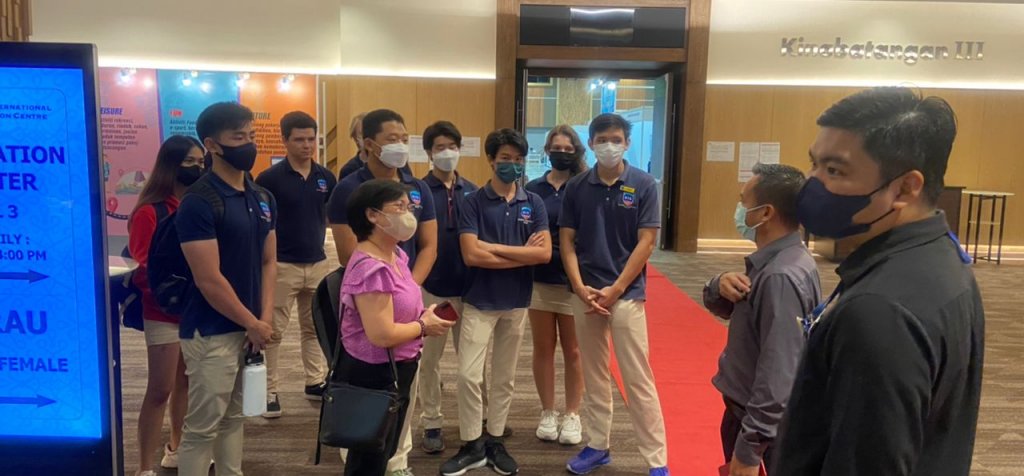From the Head of Secondary 24.09.2022
The Duke of Edinburgh Award
An excited group of students were waved off at 2.15pm on Wednesday as they embarked upon their Duke of Edinburgh Adventurous Journey. We wish them, and the teachers, Ms McNutt, Mr Gant, Mr Williams and Mr Watson the best of luck, and let’s hope that the rain stays away! We expect that they will return somewhat exhausted and looking forward to a good shower and a restful sleep. In the meantime, a WhatsApp group has been set up so that parents can follow the progress of the group and see some of the challenges that they are facing. Special thanks to Ms McNutt for her stalwart and continuing leadership of the Duke of Edinburgh Award at KIS. In addition to working directly with students, she is developing an amazing and enthusiastic team of teachers and this will ensure that the sustainability of the Award at KIS.
Developing Understanding of Data
Recently, students in Years 7, 10 and 12 have been taking CAT4 tests. These tests produce a profile of a student’s learning bias or preference based on a comparison of scores obtained on Verbal Reasoning and Spatial Ability batteries. What is shown may not be a preference or bias that is observed or used in the classroom, rather it suggests an underlying bias towards learning in a particular way or a way that combines different skills, which draws on strengths demonstrated in results from CAT4.
Verbal and spatial abilities may be seen as extremes on a continuum of ability (with numerical and nonverbal abilities representing a combination of these two extremes in differing degrees). The CAT4 profile contrasts the extremes using the stanine score as the most relevant measure and factors in the level of ability displayed in each area. The CAT4 data can be extremely useful, together with other assessments, in identifying where students are perhaps not performing as well as their suggested potential, and help guide teachers in developing or using strategies suggested in each student’s CAT4 profile. The CAT4 test is also given to all new students entering the school, and that information is given to all the teachers in advance of them starting. To move forward in our understanding of how we can make use of CAT4 data to enhance the learning experiences of our students, we are setting up a group consisting of one representative from each department who will receive INSET, led by Mr Bromley. This training will help to develop the participants’ expertise, and they will then cascade this learning within their departments. This will lead to the identification of individuals and cohorts who would benefit from, for example, different teaching and learning styles. We are determined to further our understanding of the use of data within school.
The Environment
Some of our students are working very hard in and outside of school to make the world a better place with a particular focus on the environment. Tiggi Mornington Sanford is one of those, and I applaud her efforts, not only in leading and contributing to a range of activities, but in writing about them for our weekly newsletter. This week Tiggi comments on her recent endeavour:
WHY IS THIS STILL HAPPENING in 2022?
International Coastal Clean-up 17th September
It was great to see so many people who had turned up to help with the International Coastal Clean-up at various beaches around the northern tip of Borneo at Tanjung Simpang Mengayau. The Kudat Turtle Conservation Society KTCS organised the event and we had a waste skip from the council and biodegradable rubbish bags. It was an early start at 7am and it was a hot day.
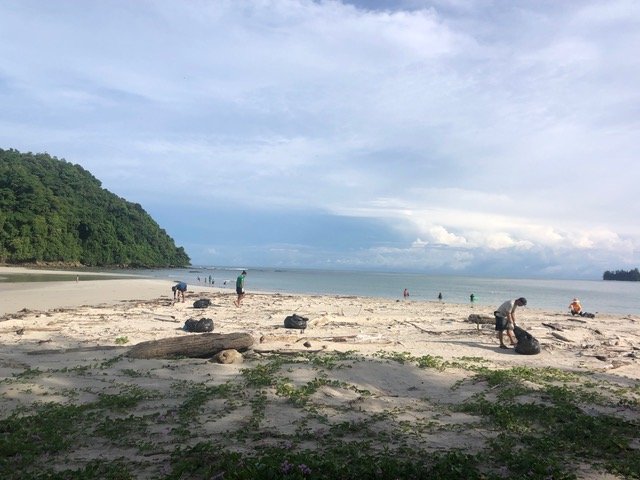


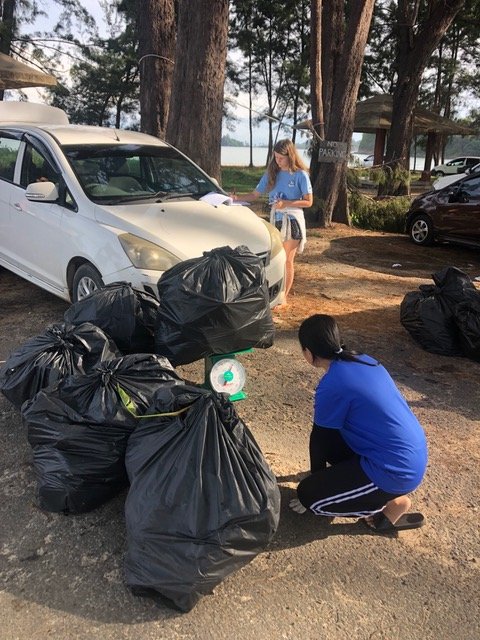
We collected a grand total weight of 894.4 kg.
Sad to say that even though the beach and picnic area were clean on the Saturday it went back to being covered in rubbish the very next day! This had either washed up from the sea or been left by people, perhaps having a picnic, who had just dumped all their plastic bottles and bags.
Many thanks to Tiggi for her timely reminder of what we can all do to support a healthy environment.
What’s Happening Next Week?
On Monday and Tuesday our Business students, accompanied by Mr Grant and Dr Wong, will be visiting the Hyatt Hotel. This visit is an opportunity for the students to align learning gained in the classroom into a practical, real-life business context. Briefly, they will investigate the roles and responsibilities of staff involved in the front-of-house and back-of-house departments of an international hotel, such as human resources, finance, front desk and food production and service. Moving forward, we are hoping to develop and nurture partnerships with local businesses as this is a good way to develop the students’ work-related business knowledge.
On Friday 30th we will be holding our traditional Student Leadership Assembly, where the various student teams [House, Student Council, Charity Committee, Eco Warriors] will present themselves and an overview of what their aims and plans are for this year. Now that we are back at school and face to face, 2022 will definitely be the year that we see our Student Leaders achieving their goals!
Read on to see our students’ accounts of their visits to the Server Room at KIS and SICC and the Bowling trip [Year 12 and 13]. Thank you to our students for writing these [I couldn’t help but be amused by David’s tongue in cheek description of “ Mr Clifford who was cheating, using his unfair advantage of height and long arms, meaning he managed to score the most out of anyone”]. Finally, have go at the Languages quiz, which has been put together by Mrs Anuar Ghani in celebration of European Day of Languages , celebrated every year on the 26th September!
Have a lovely weekend, Passe un bon weekend, Selamat berhujung minggu, 즐거운 주말 보내세요jeulgeoun jumal bonaeseyo, Que tengas un hermoso fin de semana, 有個甜蜜的周末
Yǒu gè tiánmì de zhōumò
Mrs Margaret Renshaw
Deputy Principal / Head of Secondary
YEAR 12 SICC SERVER ROOM VISIT
A Report by Ryan Richie
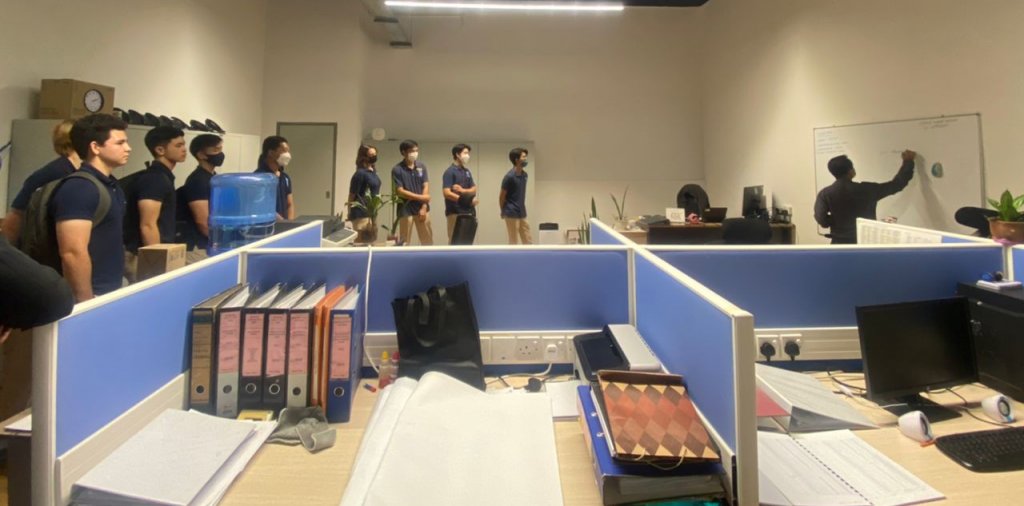
Our trip to SICC was an educational and interesting one. It was intriguing to compare the servers at SICC to the ones in school. Surprisingly, they were almost the same size, even though one would imagine that the servers for a massive convention centre would be much larger. One reason for this is that they have risers, which all contain switches. Each floor contains its own server, and they are interconnected, making its network multiple times larger than the KIS one, as KIS only has one server room.
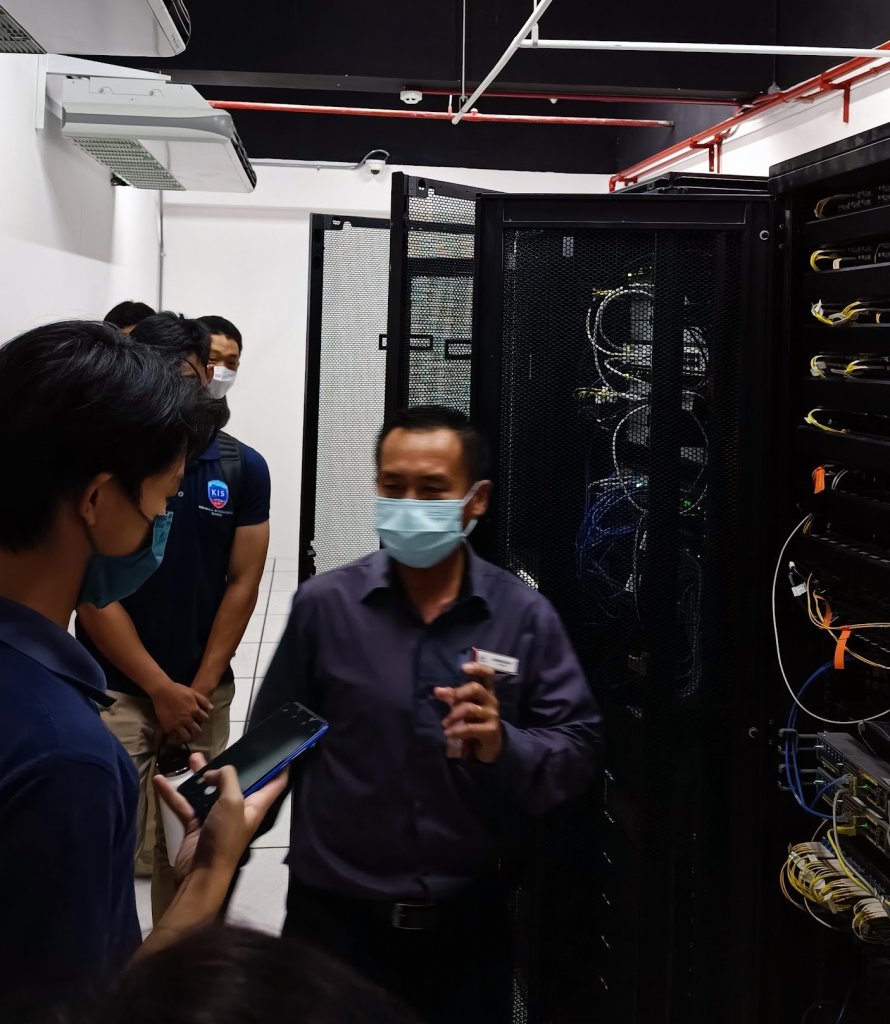 Stepping into the sci-fi-looking room, the guide, an IT specialist from SICC, went through all the hardware. Many safety precautions were prepared to take care of the data in the event of an accident, eg. an extensive fire safety system. The entire room is cooled by multiple air conditioners to ensure that the servers don’t overheat. Apparently, all the wires run under the flow, which is why it feels hollow.
Stepping into the sci-fi-looking room, the guide, an IT specialist from SICC, went through all the hardware. Many safety precautions were prepared to take care of the data in the event of an accident, eg. an extensive fire safety system. The entire room is cooled by multiple air conditioners to ensure that the servers don’t overheat. Apparently, all the wires run under the flow, which is why it feels hollow.
There were a lot more questions in mind, but we were told that non-hardware related topics like the cost of the servers and the total capacity and storage were confidential. It was a privilege to visit the server of a private property of such a large scale along with 6 people from year 12s.
A Report by Dave and Ricky
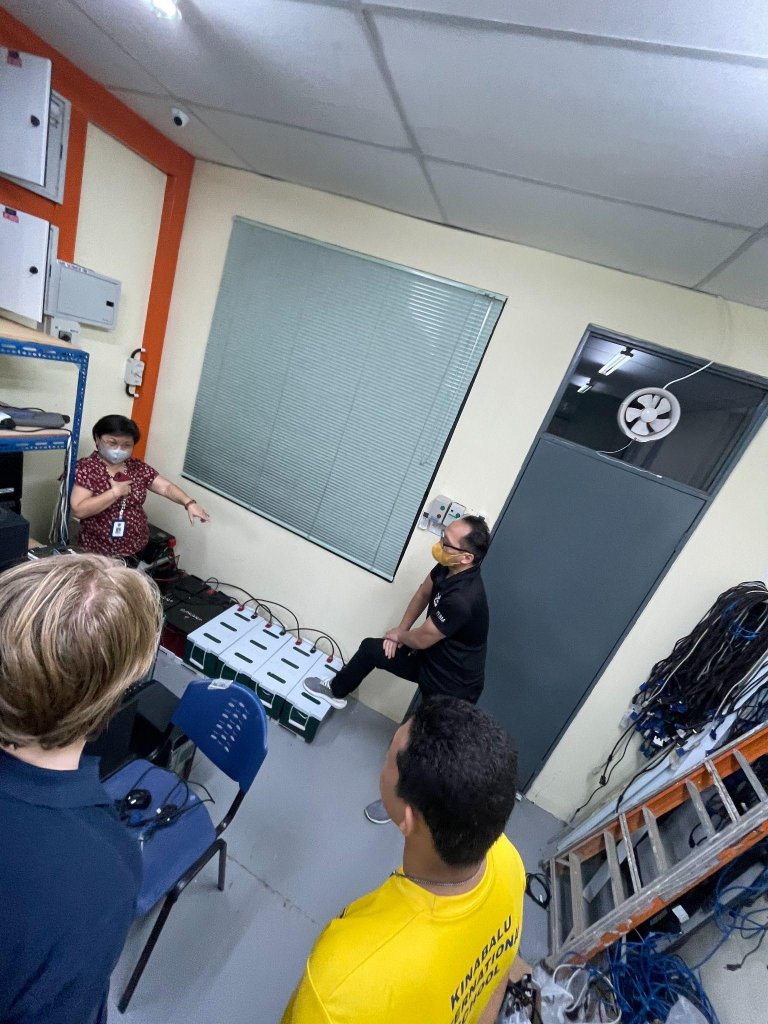 Visiting the SICC and KIS servers was a very interesting and enlightening experience. It was fascinating to see the complexity and how intricate the process of doing what appears to be the simple task, storing data. Surprisingly although the establishments in question were quite different, we saw many similarities between the two server rooms. Firstly and obviously, they were both air conditioned with two units on alternating timers. The cable management in both rooms was very good, although SICC had a raised floor which gave the benefit of appearing neater. Both rooms factored in external factors such as power cuts, lighting strikes, or any other disturbances. To counter these they both had back-up power systems. However, in our opinion, the KIS back-up system appeared to be more modern as it used 8 large capacity batteries that can keep the server room powered for up to 2 days in case of a power outage, whereas SICC uses backup generators to not only just power the server room, but the entire building.
Visiting the SICC and KIS servers was a very interesting and enlightening experience. It was fascinating to see the complexity and how intricate the process of doing what appears to be the simple task, storing data. Surprisingly although the establishments in question were quite different, we saw many similarities between the two server rooms. Firstly and obviously, they were both air conditioned with two units on alternating timers. The cable management in both rooms was very good, although SICC had a raised floor which gave the benefit of appearing neater. Both rooms factored in external factors such as power cuts, lighting strikes, or any other disturbances. To counter these they both had back-up power systems. However, in our opinion, the KIS back-up system appeared to be more modern as it used 8 large capacity batteries that can keep the server room powered for up to 2 days in case of a power outage, whereas SICC uses backup generators to not only just power the server room, but the entire building.
One of the stark differences between the two rooms was fire protection and organisation. The SICC server room was purposely built for the server system, whereas in KIS it was simply a spare room which was also used for storage for any other IT equipment that needed repair. From what we could see, at SICC the server was more secure than the servers in KIS. They had also kept their data much more confidential, as some questions we asked were not allowed to be answered. Compared to KIS, Mr. Collins was very open about prices, storage space, equipment, and what components of the server were used for. An interesting thing we noticed about the KIS server is how the school has shifted to more mobile workstations compared to traditional desktops. This has left much of the server redundant as most teachers do not use the desktops, and prefer to connect to the server through WLAN on their own devices.
To conclude our experience, we had learned a lot about how server rooms operate, the effect they had on each business, and the importance that they hold in an organization. We were also able to see the many similarities and differences that server rooms in different organizations may have.
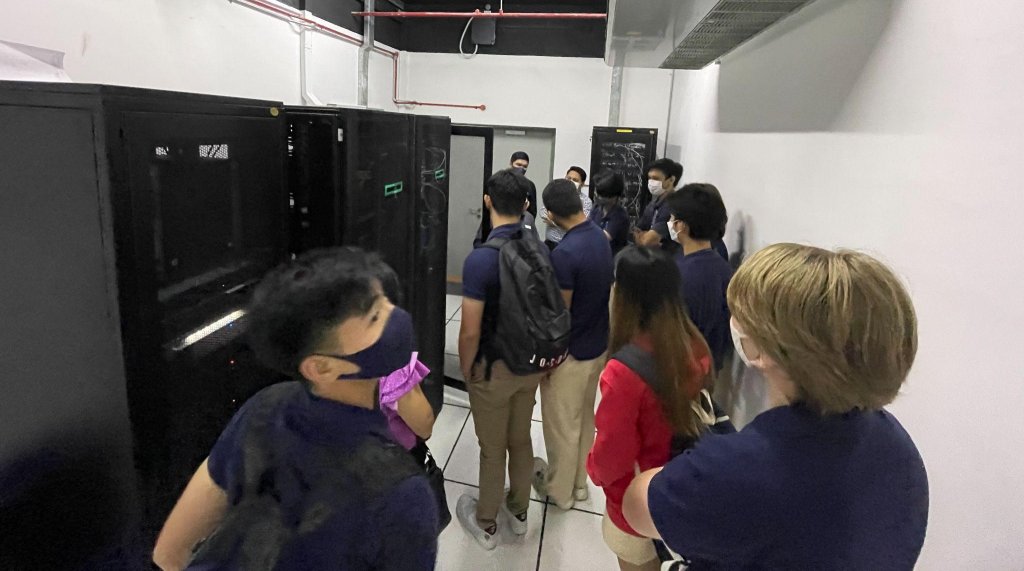
Report by Courtney and Hanson
The main trip to the SICC server room made us come to the realisation, that regardless of class, people’s insides are the same.
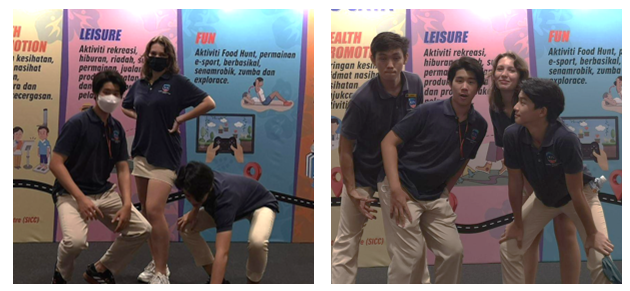
The SICC hall was polished and fancy, but the server room was in the parking lot. The room was chilled at 16 degrees, and our guide was introducing us to the fundamentals of their system. When we entered, cooling fans were buzzing throughout the room. One thing that surprised me was that all of the server’s cabling were built into the floor.
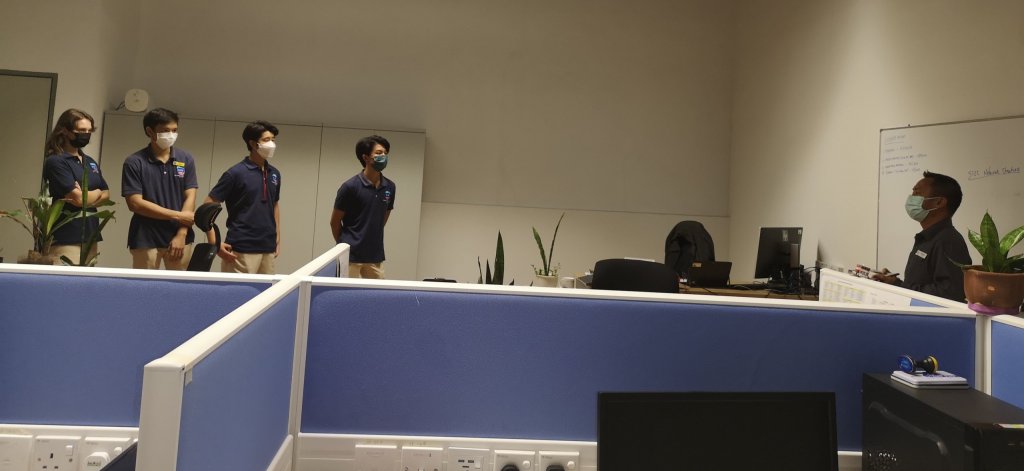
The server room resembled the KIS server room, and all the parts of the server were exactly the same.
The only difference was that there are 4 Risers for each floor, as the building is much bigger than KIS.So, to further my point, regardless how large and fancy the establishment is, the technology behind it is the same.
Report by Keith and Jessmine
On September 9, we went to Sabah International Convention Center (SICC) to see how they manage and maintain their server room. We met up with the IT manager, who explained the general layout of their system before we entered the server room.
What did we see in SICC?
 We noticed that in SICC’s server room, they had CCTVs, locked doors, alarms and fire extinguishers as their security features. They had alarms in order to notify staff in SICC if anyone breaks into the server room or if temperatures exceed 16 degrees celsius. Their fire extinguishers do not contain water as that would be hazardous and would destroy the equipment. They had raised floors to store wires. Wires could be tied up as interference would occur. The server room also contained generators to run the servers in case of a power cut.
We noticed that in SICC’s server room, they had CCTVs, locked doors, alarms and fire extinguishers as their security features. They had alarms in order to notify staff in SICC if anyone breaks into the server room or if temperatures exceed 16 degrees celsius. Their fire extinguishers do not contain water as that would be hazardous and would destroy the equipment. They had raised floors to store wires. Wires could be tied up as interference would occur. The server room also contained generators to run the servers in case of a power cut.
KIS server?
In the KIS server room, we noticed that they had very similar security features such as CCTVs, locked doors, and alarm. However, they missed out fundamental aspects of a server room, such as raised flooring. This caused them to display their cables which can be seen as messy and complicated.
- Server B cost rm470, 000
- Ethernet cabling cost rm16,000
- Each battery cost rm 2000 and they had 8 batteries
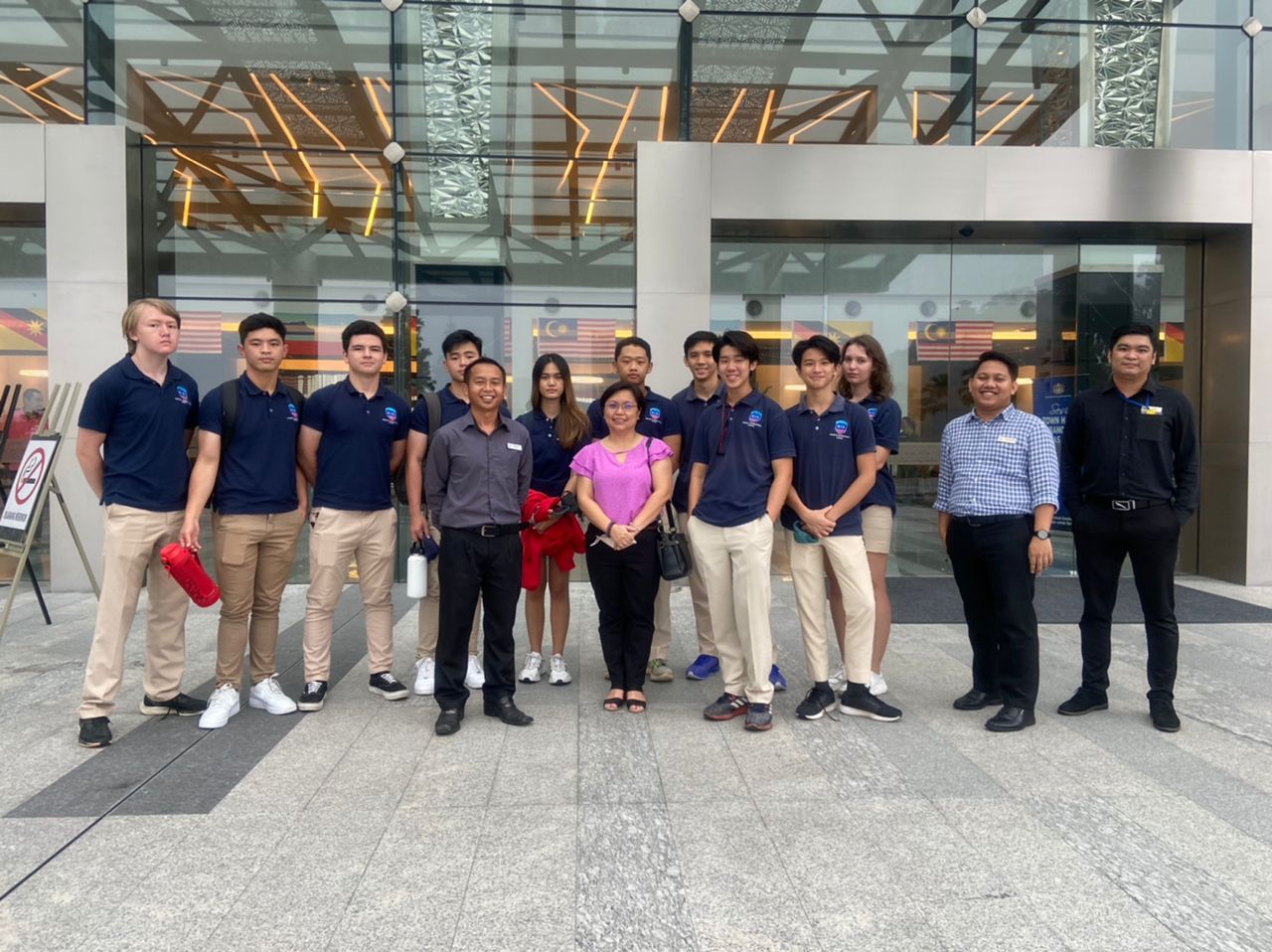
Report by Marc and Minjae
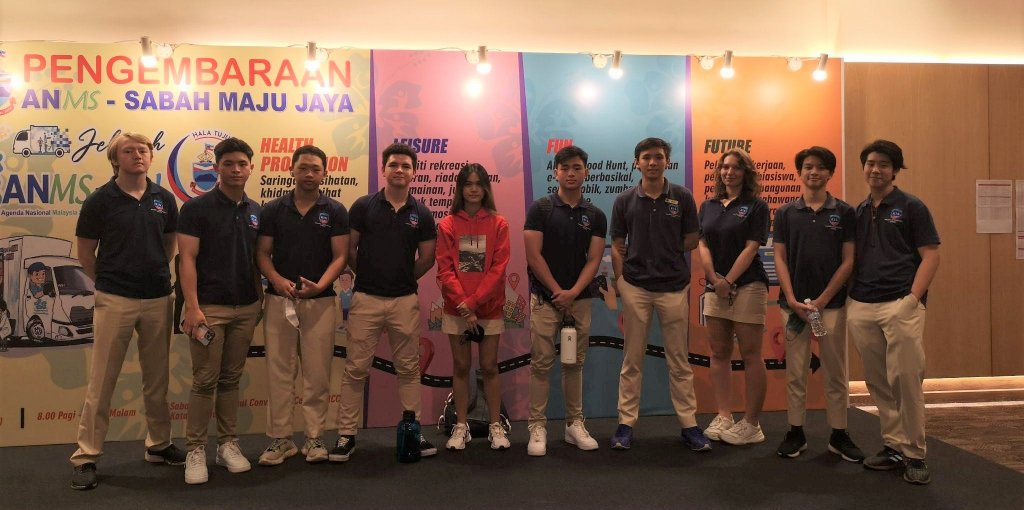 SICC’s server room was air-conditioned at all times with two ceiling universal air conditioning units to maintain a suitable temperature of 16 degrees celsius to prevent overheating. Compared to KIS’ server room, theirs was much more protected and had elevated flooring to allow for full 360 degree cooling for the hardware. Additionally, SICC possessed a generator set which, in the event of a blackout, would maintain the building’s electrical supply. Moreover, SICC’s server room had many security features such as CCTVs, key card scanners behind the doors and smoke detectors; which in the event of an emergency, would spray fire extinguishing powder over the server system.
SICC’s server room was air-conditioned at all times with two ceiling universal air conditioning units to maintain a suitable temperature of 16 degrees celsius to prevent overheating. Compared to KIS’ server room, theirs was much more protected and had elevated flooring to allow for full 360 degree cooling for the hardware. Additionally, SICC possessed a generator set which, in the event of a blackout, would maintain the building’s electrical supply. Moreover, SICC’s server room had many security features such as CCTVs, key card scanners behind the doors and smoke detectors; which in the event of an emergency, would spray fire extinguishing powder over the server system.

KIS Server Room Visit
 There were 2 main servers in the room. The newest being introduced 5 years ago and oldest, 10. The Newer and larger Server, from Dell EMC, was placed in RACK B and cost just under RM500,000. This server had the largest storage capacity in Sabah, boasting a 256 RAM capacity.
There were 2 main servers in the room. The newest being introduced 5 years ago and oldest, 10. The Newer and larger Server, from Dell EMC, was placed in RACK B and cost just under RM500,000. This server had the largest storage capacity in Sabah, boasting a 256 RAM capacity.
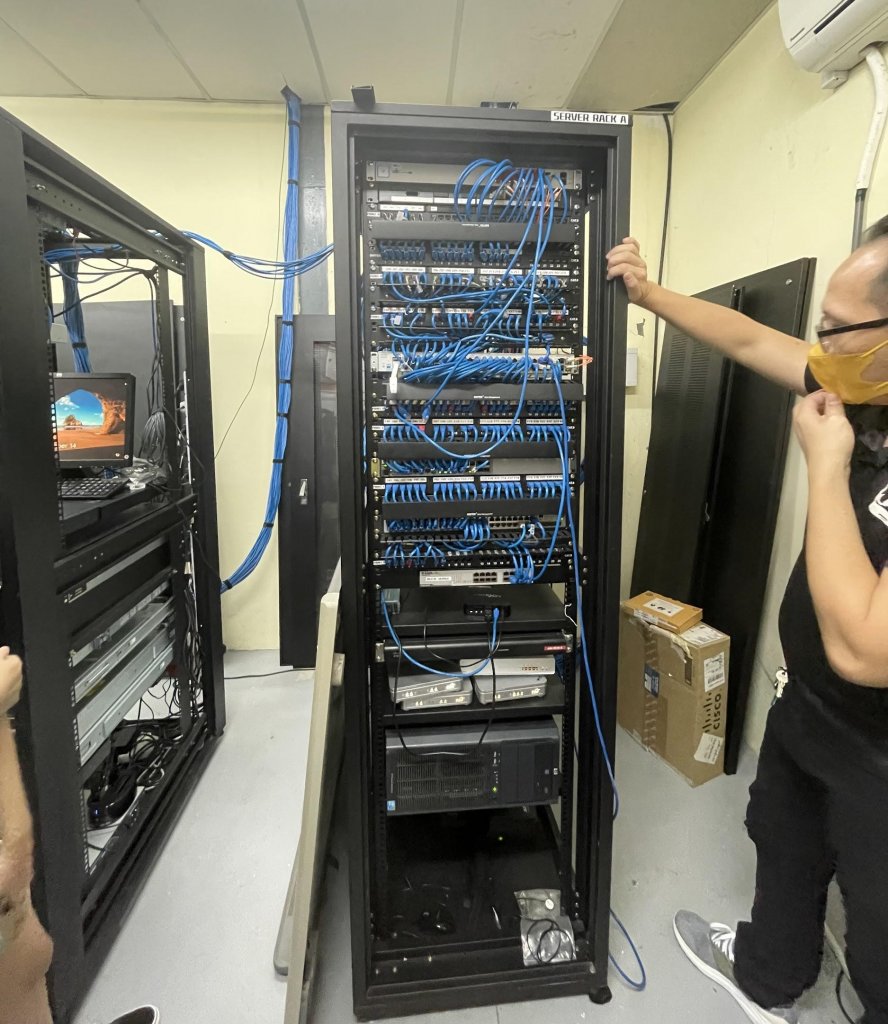 Additionally, in RACK A, there were two network routers, each having a network speed of 800MB respectively, totalling up to 1600MB. On top of that, they also had 8 batteries which weighed 80kg each, potentially powering the server for up to two days after a blackout. Another point that surprised us was the amount of cables being used and the price. The cables alone cost upwards of RM50,000 at RM450 each. and also the size of the storage capacity as it was 6 terabytes. Compared to SICC’s server, it was really compact.
Additionally, in RACK A, there were two network routers, each having a network speed of 800MB respectively, totalling up to 1600MB. On top of that, they also had 8 batteries which weighed 80kg each, potentially powering the server for up to two days after a blackout. Another point that surprised us was the amount of cables being used and the price. The cables alone cost upwards of RM50,000 at RM450 each. and also the size of the storage capacity as it was 6 terabytes. Compared to SICC’s server, it was really compact.
It was a really interesting and enjoyable experience to be able to see operational server systems first hand with our classmates at both SICC and KIS. We thank Ms B and Richie for making this trip possible to give us a better understanding of our computer science course in AS. We would also like to thank all the friendly staff for showing us the rooms and answering any questions that we had along the way.
Report by Minjae and Marc
The Sixth Form Go on a Bowling Trip!
What Hanson thought of the Bowling Trip:
On 13th September, Mr Clifford came up with a genius idea for bonding in the Sixth Form, so there wouldn’t be any distance between the students in Year 12 and those in Year 13.
The whole event took around an hour and a half, as we played 2 games.
At the end of it all, I think everyone had a great time and we definitely look forward to future activities. 🙂
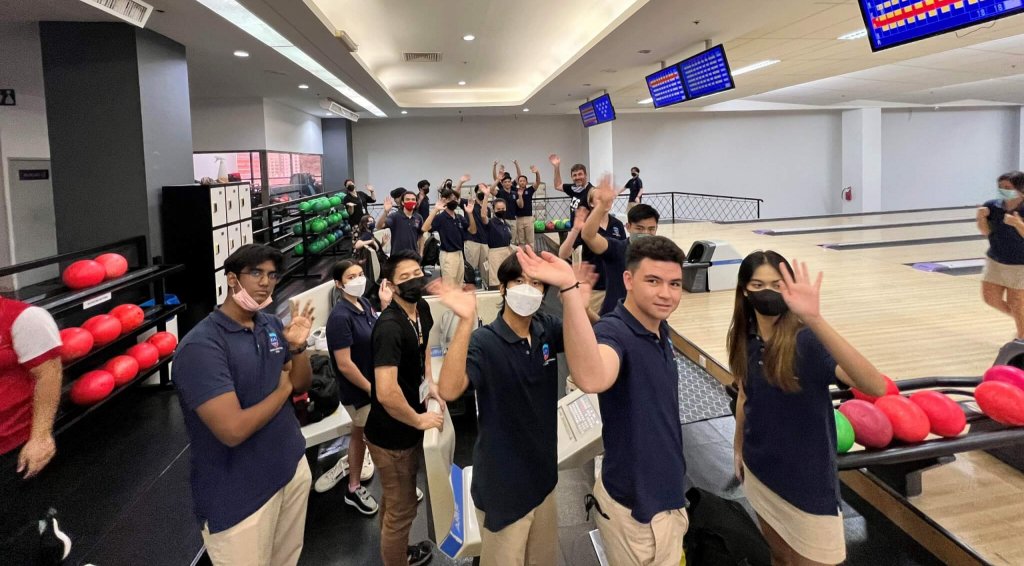
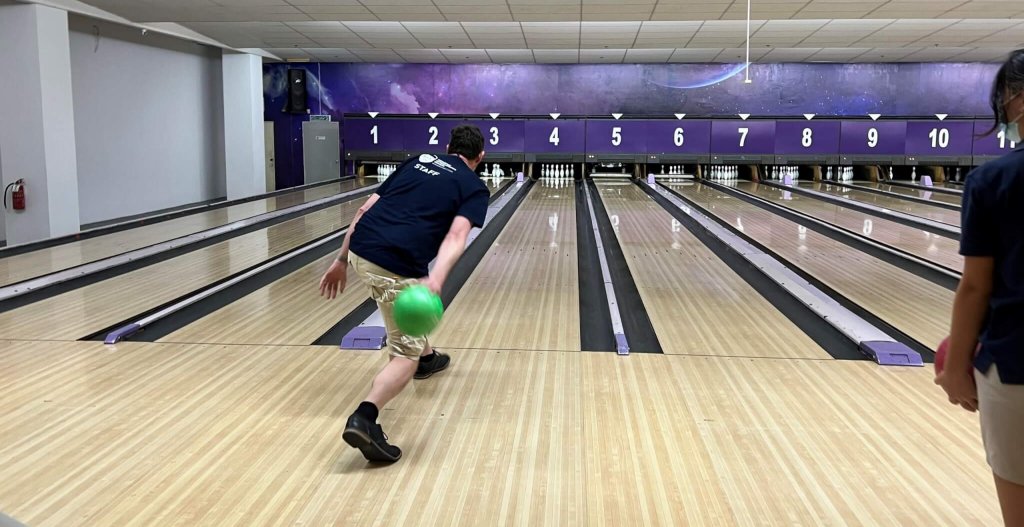
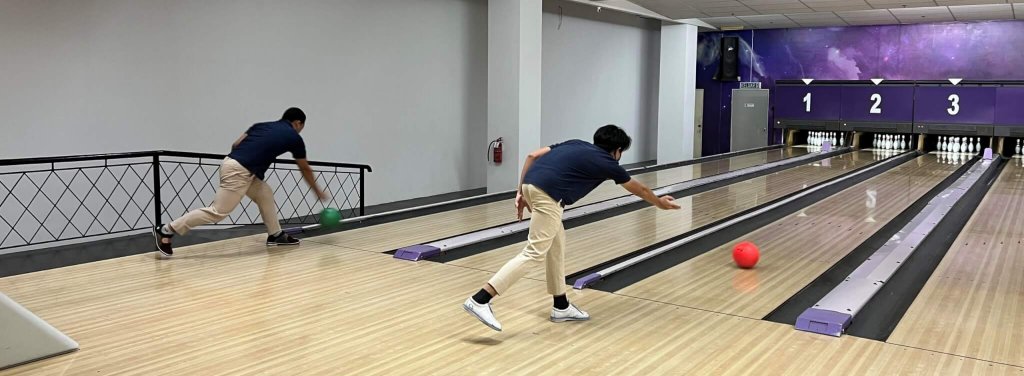
A Perspective from David Mills:
In the past, there’s been something of a separation between the upper and lower 6th form students. To counter this, the Year 13 Form Tutor Mr Clifford organised a bonding activity for us all to go bowling! On the 13 of September we all eagerly hopped onto the bus and made our way to Galaxy Bowl. Mr Clifford decided to split us into random groups. This is so we got out of our comfort zone and to get us talking to other students we may have never have had a conversation with previously.
In the groups, there were a variety of players. There was Mr Clifford who was cheating, using his unfair advantage of height and long arms, meaning he managed to score the most out of anyone. MJ was another player who shone! Trying to curve his bowls by hurling them down the alley. Then, Mrs Colbeck who refused to play. But we all know she did that to hide her national-level bowling skills. Most importantly the birthday girl Ms Beresford! She used her spirit and skill to score a strike while on a call!
Overall I think all of us can say we had a wonderful experience. But most importantly, we managed to form new bonds and friendships. As a whole we would like to thank everyone involved for making this event a huge success and we are all looking forward to experiencing more together as 6th form students!
